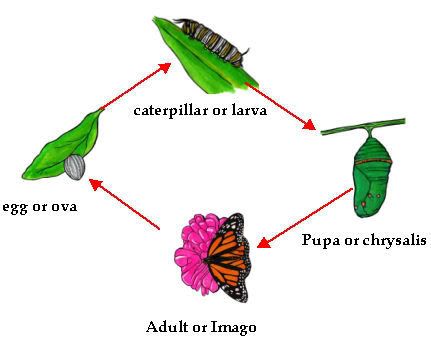

Last semester my co-workers and I wanted to have a pet in the office and well, we decided to raise caterpillars. It was fun and fascinating to see the process of a caterpillar change to a butterfly. We didn't know much about raising them we just knew that they had to eat. We created a nice home in a plastic see through container, the kind you use for hamsters, and everyday we would do our observations as well as cleaning their area (they sure can disposite waste!!!!). Because I had fun with our office pets...I thought it'd be cool to this for a unit plan for my long range, so , for my concept mapping~ it's on BUTERFLIES...what are they, what do they eat, what are the stages and how long do they last....and more questions!!!!
Apparently, there are a lot of websites regarding teaching about butterflies with lots of activites, it was cool to see that this was a popular concept. Heres, what I've found:
What is it?
An insect order called Lepidoptera which in Greek means scaled wing
How many species are there?
165,000 Lepidoptera 24,000 are butterflies
Habitat
Where dose it live?
Lives on milkweed plants
Food
What does it eat?
Flower nectar
What’s it made of?
How does it get its colors?
The scales on the wings causes their color
Size
1/8 to a foot
Changing process
From caterpillar to butterfly
4 Stages
Egg- 200-500 eggs are laid and are hatched about 5 days later
Caterpillar- (LARVA) eat egg shell, then lots of leaves, sheds own skin about 5 times after 2 weeks of eating and shedding it looks for a place to change.
Chrysalis (PUPA)-Caterpillar in a hard shell stays in for 2 more weeks
Adult-Butterfly-emerges then looks for a mate, mates and lays eggs, lives only for 2 weeks
Sight-
Red, Green, and Yellow (Rasta colors)
Protection from predators
The milkweed leaves and stems are toxic so the caterpillar’s body becomes toxic so when birds or other predators eat them they will die
Chrysalis are camouflaged to protect them from predators
No comments:
Post a Comment